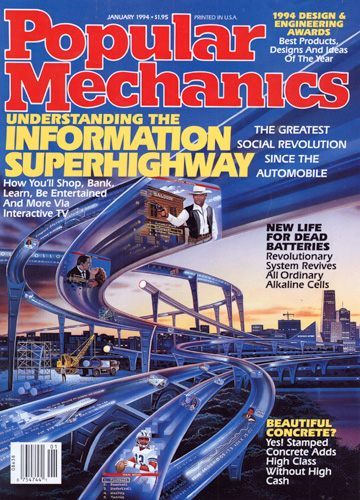Wednesday, November 16
November 16, 2005 06:36PM (EST)
0.2 Thumbs Up for The Office
Nov 16, 2005 by
Matt McAlisterproduct The Office ★★★★★Though I'm disappointed this show doesn't measure up to the original from Ricky Gervais, I find it to be easily one of the best programs on TV. It's a guaranteed laugh for me.
-----
I just wanted to test what would happen if I put a review in my feed that was tagged with the correct hReview microformat.
hReview Creator tool:
http://microformats.org/code/hreview/creator
In 1994, I gave a presentation on Internet technologies to a group of Amdahl customers who were unsure of what this whole cyberspace thing was all about. I was working on a small R&D team there who were developing a WYSIWYG HTML editor and a customizable Cern server, among other things, none of which made it to market.

I was reminded of this yesterday while giving a presentation to a group of publishers at
Stanford's Publishing on the Web course run by Holly Brady and Janet Wright. Except this time I had a little more perspective than my view only a year out of university back at Amdahl.
They were there to learn smart strategies for operating their businesses. I was there to talk about RSS, Tagging, Social Networks and the pending threats and opportunities for publishers in the new world. (
PowerPoint 6.3MB)
I struggled a bit coming up with a thesis for my talk. I wanted to go through the implications of these new things on the content business, but it wasn't until I looked up "
Mashup" in Wikipedia that the message became clear to me.
Telling the Web 2.0 story is full of buzziness that only a VC can love. But when I positioned the talk around 'Mashups' I think I stumbled on a concept that people can lock on to.
I started with a definition of Mashup by talking about music, sampling and Hip Hop. Everyone understands that.
I then went through the trends I see affecting publishers in terms of their home page traffic (RSS readers and new browsers taking away attention), navigation (semantics and tagging becoming the new concepts for user interfaces) and then communities that are forming in different ways (social networks driving usage away from publishers).
I followed that by explaining how these pieces can contribute to a 'Mashup' using a few examples like the
Yahoo! Event mashup,
BBC's various traffic mashups and
Trulia.
Finally, I went through a few concepts for business models and then stepped through the various arguments against making your content more Mashup-friendly, posing some challenges to each.
The response seemed mixed, but based on some of the questions I got (
"Explain again how I make money with someone else using my content?" and "How can I track what's happening with my content out there?") and even some of the challenges (
"You're saying that I should encourage people to take my most valuable content and reuse it? No. I don't see it." and "Isn't a mashup copyright infringement?") the message of what a Mashup is got through.
From what I could tell, everyone in the room understood Web 2.0 despite the fact that I didn't once mention the term. Remember the idea of the "
Information Superhighway"? That was a very effective way of grasping the Internet in 1994. It seems the "Mashup" might be the smartest way to give today's Internet trends life for the non-technical.

 Digg
Digg Comment
Comment
